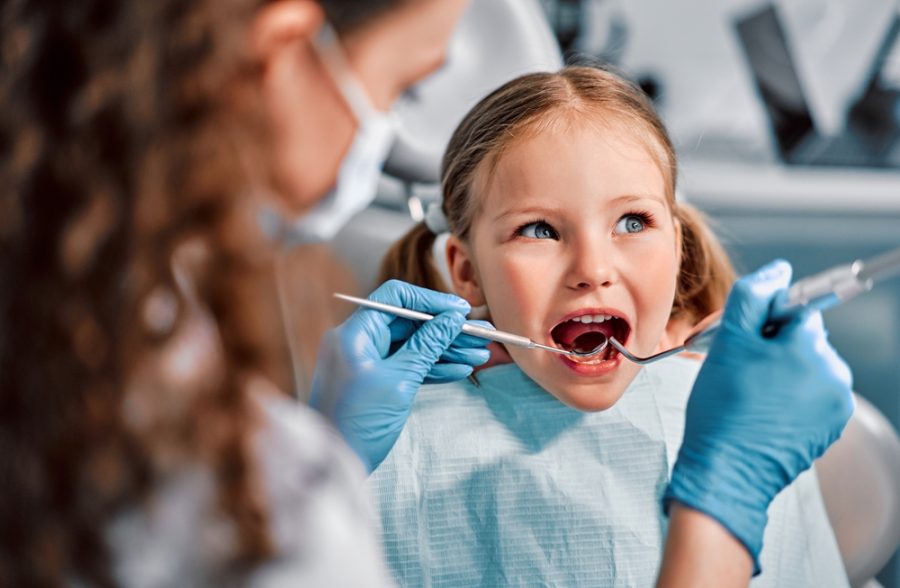When parents think about braces or Invisalign, they often picture teenagers. But did you know that the American Association of Orthodontists recommends children get their first orthodontic evaluation by age 7?
Early orthodontic treatment—also called Phase 1 treatment—can play a key role in guiding proper jaw development, correcting bite issues, and making future treatment faster and less complex. At My LA Braces, the highest-ranked orthodontist office in East Los Angeles, we specialize in early interventions that set kids up for a lifetime of confident, healthy smiles.
We’ll explore the top benefits of early orthodontic care, how it works, and why it’s important to start sooner rather than later.
What Is Early Orthodontic Treatment?
Early orthodontic treatment (Phase 1 treatment) typically begins between the ages of 6 and 10, while a child still has a mix of baby and permanent teeth. The goal isn’t necessarily to straighten teeth at this stage—but to address developing issues with the bite, jaw growth, or spacing that, if left untreated, could worsen over time.
Some treatments may involve removable appliances, expanders, limited braces, or habit-breaking appliances (like those for thumb sucking or tongue thrusting). Every child is different, and early treatment is highly personalized.
1. Guides Proper Jaw Growth
One of the biggest advantages of early treatment is the ability to influence jaw development while the bones are still growing. If your child has a narrow upper jaw, a crossbite, or an underdeveloped lower jaw, we can use expanders or orthopedic appliances to gently guide growth and prevent the need for more invasive treatments later on—like surgery or tooth extractions.
By working with the natural growth process, we create space for adult teeth to come in properly and improve facial symmetry.
2. Corrects Harmful Oral Habits
Thumb sucking, prolonged pacifier use, and tongue thrusting can all affect how your child’s teeth and jaws develop. If these habits continue too long, they can lead to open bites, misaligned teeth, and speech difficulties.
Early orthodontic evaluation allows us to identify these habits and provide treatment options that help your child stop them in a healthy, supportive way—before lasting damage is done.
3. Reduces the Risk of More Serious Problems
Interceptive orthodontics can catch problems early, such as:
- Overbites or underbites
- Severe crowding
- Crossbites
- Narrow arches
- Early or late loss of baby teeth
- Difficulty chewing or biting
Addressing these issues early can simplify or even eliminate the need for more extensive treatment during the teen years. Think of it as preventive care for your child’s future smile.
4. Improves Appearance and Self-Esteem
Kids can be sensitive about their appearance, especially when their teeth are noticeably misaligned. Even at a young age, children may feel self-conscious about gaps, protruding teeth, or bite issues that affect how they speak or smile.
Early orthodontic treatment can give kids a head start toward a more confident smile—helping them feel better socially, emotionally, and academically.
5. Creates Space for Permanent Teeth
One of the most common issues we see at My LA Braces is crowding—when the mouth is too small for all the adult teeth to come in properly. Early treatment with palatal expanders or space maintainers can make room for erupting teeth, reducing the need for extractions or surgical corrections later on.
6. Helps Prevent Trauma to Protruding Teeth
Children with front teeth that stick out (known as overjet) are more vulnerable to injuries, especially during sports or active play. Early treatment can move the teeth into a safer position, reducing the risk of dental trauma.
7. Improves Breathing and Sleep
Sometimes, orthodontic problems affect more than just the smile. Narrow arches or jaw misalignment can contribute to mouth breathing, snoring, or even pediatric sleep apnea. By improving the airway through orthodontic treatment, we can help some children breathe and sleep better—benefits that go beyond the dental world.
8. Sets the Stage for Successful Phase 2 Treatment
In many cases, early treatment is followed by a second phase (Phase 2) once all permanent teeth are in. However, because Phase 1 has already corrected foundational issues, Phase 2 tends to be shorter, simpler, and more predictable.
At My LA Braces, we carefully plan the timing and coordination of both phases to give each child the most effective and comfortable experience possible.
How We Can Help
At My LA Braces in Montebello, CA, we’re proud to be the highest-rated orthodontist office in East Los Angeles—and we believe every child deserves a healthy smile that grows with them.
Our approach to early orthodontic treatment is proactive, gentle, and tailored to your child’s unique needs. Whether it’s guiding jaw development, correcting bite issues, or building confidence, we’re here to ensure your child has the best foundation for long-term dental health.
We offer free consultations so parents can understand if their child may benefit from early intervention. Our expert team will walk you through everything—from what to expect to how long treatment may take.
Don’t wait for problems to get worse—book your child’s orthodontic evaluation with My LA Braces today, and give them a smile that’s healthy, confident, and built to last.

